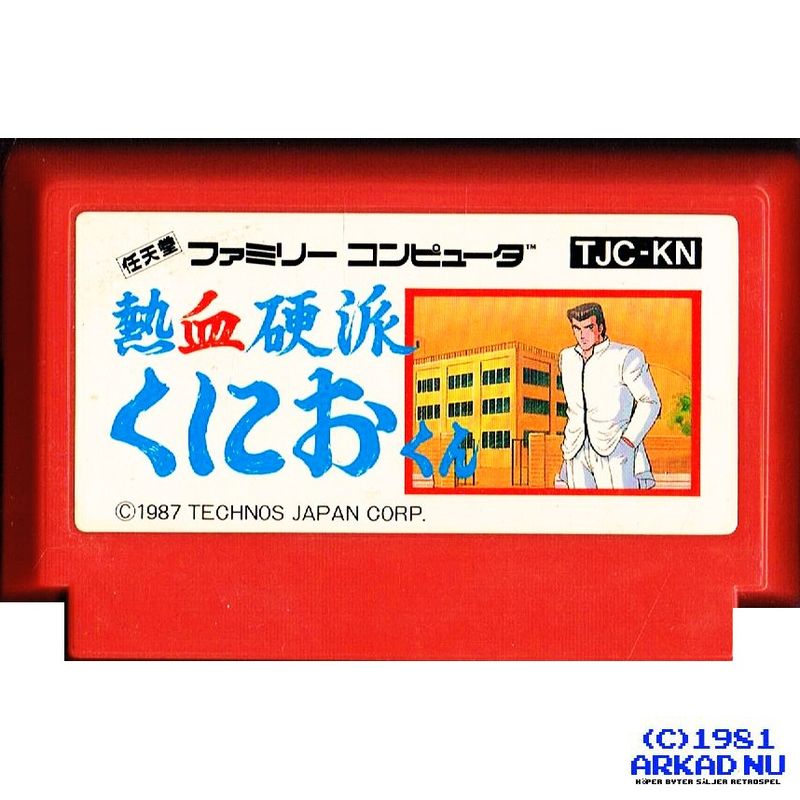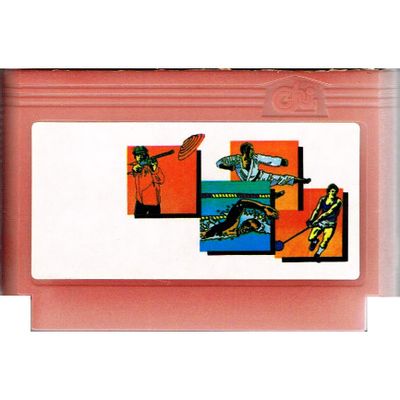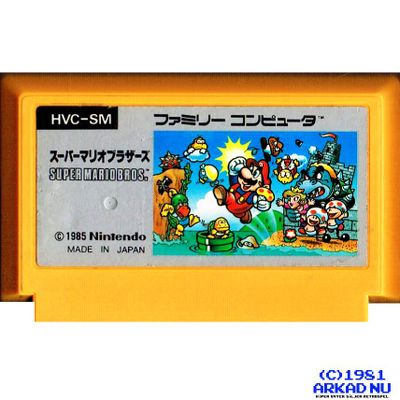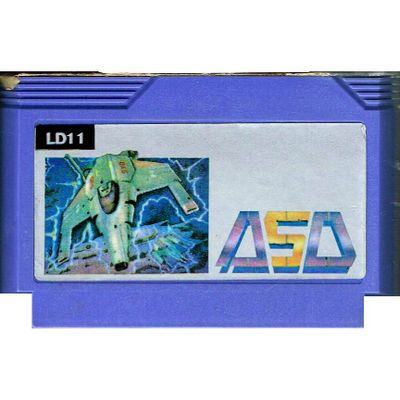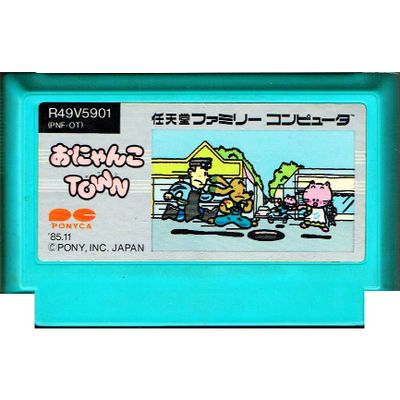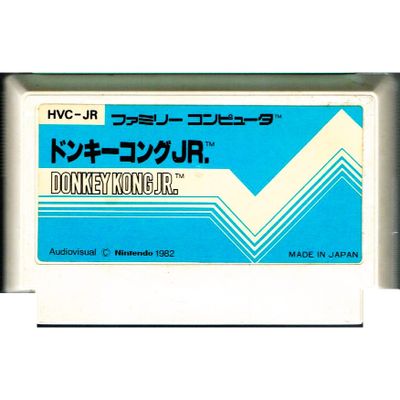NEKKETSU KOUHA KUNIO-KUN RENEGADE FAMICOM
Liknande produkter
Beskrivning av NEKKETSU KOUHA KUNIO-KUN RENEGADE FAMICOM
NEKKETSU KOUHA KUNIO-KUN RENEGADE FAMICOM - TJC-KN
FUNGERAR PÅ JAPANSK ELLER REGIONSFRI ENHET
Nekketsu Kōha Kunio-kun ("Hot-Blooded Tough Guy Kunio", Nekketsu Renegade Kunio-kun in DOUBLE DRAGON & Kunio-kun Retro Brawler Bundle) is the inaugural title of the Kunio-kun series, a beat 'em-up game released for the arcades in 1986, developed and published by Technōs Japan Corp.. It was published by Taito for the western market as Renegade (which made changes to all of the sprites and backgrounds).
Nekketsu Kōha Kunio-kun is the technological predecessor to Double Dragon, which was created by Kunio-kun's designer and director: Yoshihisa Kishimoto (after the success of Kunio-kun, Technōs Japan wanted a sequel which used two simultaneous players and to avoid making regional and graphical changes, Kishimoto created Double Dragon, inspired by his love of Bruce Lee and his film Enter the Dragon). Kunio-kun introduced 4-directional-control and enemies that could take multiple hits. It is considered one of the most influential titles in the video game industry and many consider it the first beat 'em up ever made (The first beat 'em up was Irem's Kung-Fu Master).
The game was ported to the Famicom on April 17, 1987, the first game Technōs Japan made for consoles. The localization for the NES for the western market was also published by Taito and named Renegade. In what would become a trend by Technōs, the console version differs significantly from the arcade version in order to increase the length of the game.
The player assumes control of the titular character, Kunio-kun (or just Kunio). After a rival school gang, bōsōzoku, a girl school gang and the yakuza attack his friend Hiroshi, Kunio gives chase in order to take revenge. In the Famicom version, the Hiroshi is instead kidnapped and Kunio has to rescue him.
Kunio-kun is played with a joystick and three buttons, two which are used to attack and the other to jump (the Famicom only has two buttons, so the player has to press both buttons at the same time to jump). Kunio's attack with each button will depend on the direction he is facing. If he is facing right and presses the right button (A button on the Famicom) he will punch, while pressing the left button (B on the Famicom) will have him throw a kick behind him. These are reversed when Kunio is facing left (this control scheme would later be featured in Double Dragon II: The Revenge). Kunio can throw multiple punches if the button is pressed repeatedly, but they have a shorter reach and while the kick has a longer reach, it comes out slower and can leave him open to attack if missed.
ENDAST KASSETT

